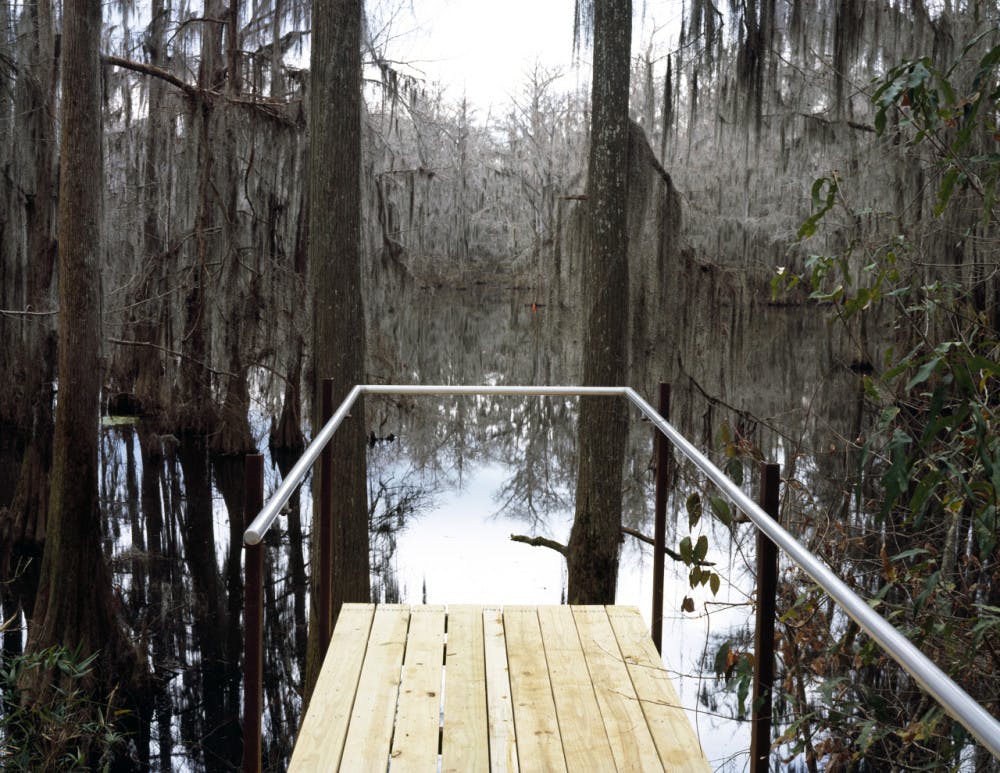Capturing tranquil elements of quotidian life in rural Hale County, Alabama, RaMell Ross, assistant professor of practice in the Visual Arts Department, explores black identity in southern culture in his latest exhibition, “Excerpts from South County, AL.”
The exhibition is comprised of six photographs detailing stills from life in Hale County. “Interface” crisply captures a somber pond surrounded by dying, leafless trees. Their branches, covered in gray moss, reflect off the water. “Dakesha and Marquise” depicts a summer scene of a woman lying on a wooden plank porch while a little boy, illuminated by sunlight, plays in the trees at the border of the house’s yard. In “Ron,” a man stands alone on a dirt road, enveloped by a billowing cloud of dust. “Sleepy Church” portrays a nighttime scene of a fallen church steeple in a parking lot, while “Brothers Z” shows two boys playing in a Ford truck in the yard of a mobile home. The subject of “Antonio” splays out on his back on a brown, dehydrated lawn near a water drain.
Ross utilizes color and light to create depth within each print. His works blend nostalgic, reminiscent sentiments with representations of vivid, gritty reality. They juxtapose vibrant, full-bodied shades of greens and blues with tawny, lackluster beiges, both colors distinctive of bucolic Hale County. Both “Dakesha and Marquise” and “Interface” offset verdant hues with a glimpse of a single, blurred red entity — a flower, and possibly a fishing lure, respectively — in the background. The subject of “Ron,” meanwhile, catches the viewer’s eye in his bright blue flannel, cap and jeans.
Within each print, the audience experiences visuals of movement and stagnation. The swirling clouds of dirt in “Ron” and the hands of the little boy playing in “Dakesha and Marquise” are captured in motion. The fallen church steeple in “Sleepy Church” lays still in the parking lot and the quiet trees in “Interface” stand tall and frozen against an eerily white, foggy background.
Ross also toys with obstruction, visibility of black skin and positions of bodies of color in both the foreground and background of his pieces. Ross creates depth in “Dakesha and Marquise” with the positioning of the two subjects. In “Brothers Z,” the bodies and faces of two young brothers are obstructed with only their feet and shins visible. The subject of “Antonio” obscures himself from the audience’s view with contortions of his body and his hand covering his face. Some pieces, like “Interface” and “Sleepy Church” do not depict bodies at all, though they may remind the audience of human’s appreciation for nature or prayer.





